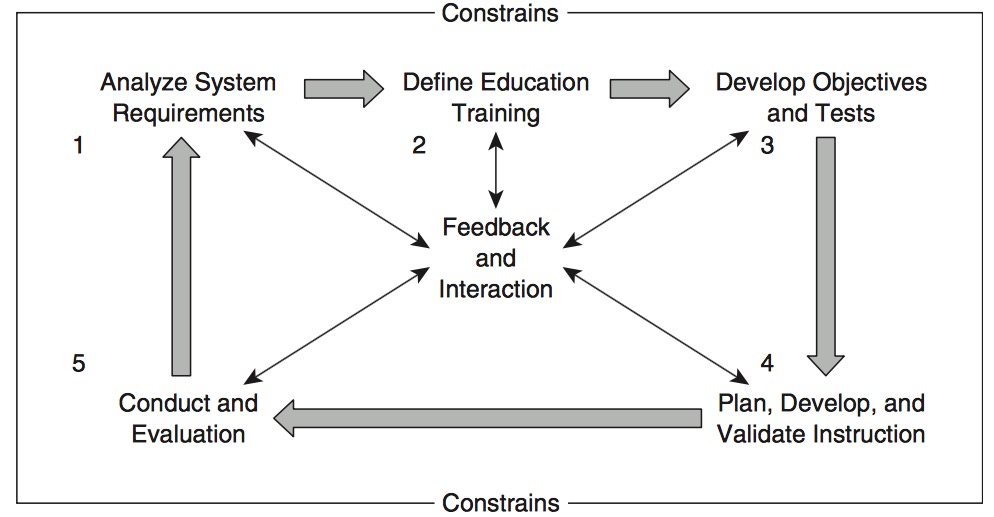Definitions of The Addie Model
What is the ADDIE Model?
This article attempts to explain the ADDIE model by providing different definitions. Basically, ADDIE is a conceptual framework. ADDIE is the most commonly used instructional design framework and can help educators and trainers build a course or training program.
“..the ADDIE Model is merely a colloquial term used to describe a systematic approach to instructional development, virtually synonymous with instructional systems development (ISD).” (1)
“The ADDIE model consists of five steps: analysis, design, development, implementation, and evaluation. It is a strategic plan for course design and may serve as a blueprint to design IL assignments and various other instructional activities.” (2)
“The ADDIE model of instructional design is a generic instructional model that provides an organized process for developing instructional materials. This systemic model is a five-step cyclical pro- cess that can be used for both traditional and online instruction.” (5)
ADDIE is five phases:
- Analysis
- Design
- Development
- Implementation
- Evaluation
Definitions of Addie Model Phases
“Analysis: the process of defining what is to be learned. Design: the process of specifying how it is to be learned. Development: the process of authoring and producing learning materials. Implementation: the process of installing the instruction product in a real-world context. Evaluation: the process of determining the impact of the instruction.”(3)
“During analysis, the designer identifies learner,content and delivery needs. The designer’s goal is to match the form and content of training with learner needs and preferences…During design, the designer uses information from the analysis stage to create instructional strategies which address the instructional goals and objectives…The development phase addresses the tools and processes used to create instructional materials…The implementation phase addresses the execution of the instructional materials or program in a training environment…The evaluation phase addresses both formative and summative assessment processes.” (4)
ADDIE History – The Original ADDIE Model
The ADDIE model was developed by Florida State University (FSU). FSU worked with a branch of the U.S. Army. The original ADDIE model:
The original ADDIE model included a five-phase process:

Phases were:
- Analyze System Requirements
- Define Education Training
- Define Course Objectives and Tests
- Plan, Develop, and Validate Instruction
- Conduct and Evaluation
References
- Molenda, M. (2003). In search of the elusive ADDIE model. Performance improvement, 42(5), 34-37.
- Davis, A. L. (2013). Using instructional design principles to develop effective information literacy instruction: The ADDIE model. College & Research Libraries News, 74(4), 205-207.
- Bell, S. J., & Shank, J. D. (2007). Academic librarianship by design: A blended librarian’s guide to the tools and techniques. American Library Association.
- Lohr, L. (1998). Using ADDIE To Design a Web-Based Training Interface.
- Shelton, K., & Saltsman, G. (2006). Using the ADDIE model for teaching online. International Journal of Information and Communication Technology Education (IJICTE), 2(3), 14-26.
